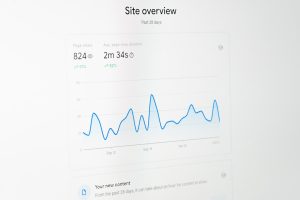
Modern organizations in the United States continuously seek ways to enhance productivity, streamline operations, and maintain a competitive edge. A crucial component in achieving these objectives is effective performance management. Among the numerous tools available, employee scorecards have emerged as indispensable instruments. These scorecards are not only vital for tracking individual performance but also for aligning employees with organizational goals and fostering a culture of accountability and continuous improvement.
Understanding Employee Scorecards
An employee scorecard is a visual and data-driven tool used by organizations to evaluate an individual’s performance against predefined metrics. These scorecards typically include Key Performance Indicators (KPIs), goals, competencies, and behaviors expected from an employee in a specific role. When used accurately, scorecards provide a dynamic snapshot of performance over a specific time period.
Unlike traditional performance reviews that often rely on subjective assessments, scorecards bring objectivity by tying performance to quantifiable outcomes. This makes them particularly valuable in large and diverse U.S. organizations where consistency and fairness are essential.
The Strategic Role of Employee Scorecards
One of the principal reasons why employee scorecards are essential is their role in strategic alignment. Scorecards ensure that activities at every level of the organization support key business objectives. By connecting day-to-day work with the broader mission, employees become more engaged and motivated to contribute effectively.
They offer organizations multiple advantages, including:
- Goal clarity: Employees understand what is expected of them and how their work impacts organizational outcomes.
- Consistent evaluations: Managers use standardized metrics to assess performance, reducing subjectivity and bias.
- Real-time feedback: Performance data can be updated regularly, allowing employees to adjust their efforts proactively.
- Data-driven decision making: Leaders rely on tangible performance insights to allocate resources, coach employees, and plan promotions.

Enhancing Employee Engagement and Accountability
When employees know how their performance is measured and feel that the evaluation process is fair, they are more likely to take ownership of their roles. Employee scorecards encourage this sense of accountability by presenting clear metrics for success.
Furthermore, engaged employees are more invested in their work and committed to improving. With scorecards, team members receive timely feedback, recognize areas for development, and identify opportunities for growth. Over time, this can lead to improved job satisfaction, lower turnover rates, and a more motivated workforce.
Facilitating Constructive Performance Reviews
The traditional once-a-year performance review has shown to be inadequate in today’s dynamic work environment. Employee scorecards support ongoing performance conversations between employees and managers. They provide a consistent point of reference, making reviews more factual, relevant, and productive.
Instead of vague feedback, managers can refer directly to an employee’s scorecard, which includes quantifiable data about job performance. This approach not only increases transparency but also fosters a collaborative atmosphere where both parties can set goals, identify development needs, and recognize accomplishments.
Customization for Role-Specific Metrics
One size does not fit all when it comes to performance management. Scorecards can be customized to reflect the unique responsibilities, expectations, and performance indicators of each role within the organization.
For example, a sales representative might have KPIs related to revenue generated, number of new clients, and customer satisfaction scores. In contrast, an HR professional’s scorecard might focus on employee retention, time-to-fill for vacant positions, and employee engagement survey results. This customization improves the relevance and accuracy of performance evaluations.

Supporting Organizational Change and Agility
In today’s fast-paced business environment, agility is essential. Organizations frequently adapt strategies in response to market shifts, customer demands, and technological advancements. Employee scorecards allow companies to revise and align performance metrics quickly, ensuring that employees remain focused on what matters most.
When strategic priorities change, scorecards can be updated accordingly. This empowers managers and employees to pivot in real-time and maintain alignment with the company’s vision. It’s a method that supports not only individual adaptability but also organizational resilience.
Technology and Integration Capabilities
With the rise of digital tools and performance management software, employee scorecards have become easier to implement and monitor. Many U.S. organizations now integrate scorecards into Human Resource Information Systems (HRIS) and other data platforms, allowing for seamless tracking and analysis.
These integrated systems enable automatic data collection, real-time updates, and intuitive reporting. They also offer advanced analytics capabilities, allowing leaders to track trends, predict outcomes, and make informed business decisions.
Challenges and How to Overcome Them
While employee scorecards offer numerous benefits, organizations must be mindful of several challenges:
- Overemphasis on quantitative data: Not all aspects of performance can be measured numerically. It’s important to balance metrics with qualitative feedback.
- Poorly defined KPIs: Metrics must be relevant, clear, and aligned with the job role and company goals.
- Lack of managerial training: Managers should be trained on how to use scorecards effectively and provide constructive feedback.
By proactively addressing these issues, organizations can maximize the effectiveness of employee scorecards and ensure a fair and comprehensive performance management system.
Conclusion
In the competitive landscape of U.S. business, effective performance management is a cornerstone of success. Employee scorecards play a critical role in this domain by offering clarity, consistency, and actionable insights. They not only align individual efforts with organizational goals but also foster a culture of accountability, transparency, and continuous development.
Organizations that harness the power of well-implemented scorecards are better positioned to engage employees, adapt to change, and drive superior results. As the workplace evolves, the importance of these tools will only grow, making them a vital component of modern HR strategy.
Frequently Asked Questions (FAQ)
- What is an employee scorecard?
An employee scorecard is a tool used to assess an employee’s performance using predefined metrics such as KPIs, goals, and behaviors. It provides a structured and objective way to evaluate and manage performance. - How often should scorecards be updated?
Ideally, scorecards should be updated regularly—monthly or quarterly—to provide timely feedback and ensure alignment with current goals and priorities. - Can employee scorecards be customized?
Yes. Scorecards should be tailored to specific roles to accurately reflect different expectations and relevant KPIs for each position. - Are scorecards effective for remote or hybrid teams?
Absolutely. In fact, they are particularly useful in remote settings for providing structured performance data and ensuring accountability across locations. - Do scorecards replace traditional performance reviews?
No, they enhance them. Scorecards provide the data and context necessary to make performance reviews more factual, constructive, and effective. - What industries benefit most from using scorecards?
While all industries can benefit, sectors such as finance, technology, healthcare, and retail—where performance data is readily available—see the greatest impact.






